WWII Fiume Italy U.S. Infantry & Armored Division Allied Italian Campaign Italy Combat Map
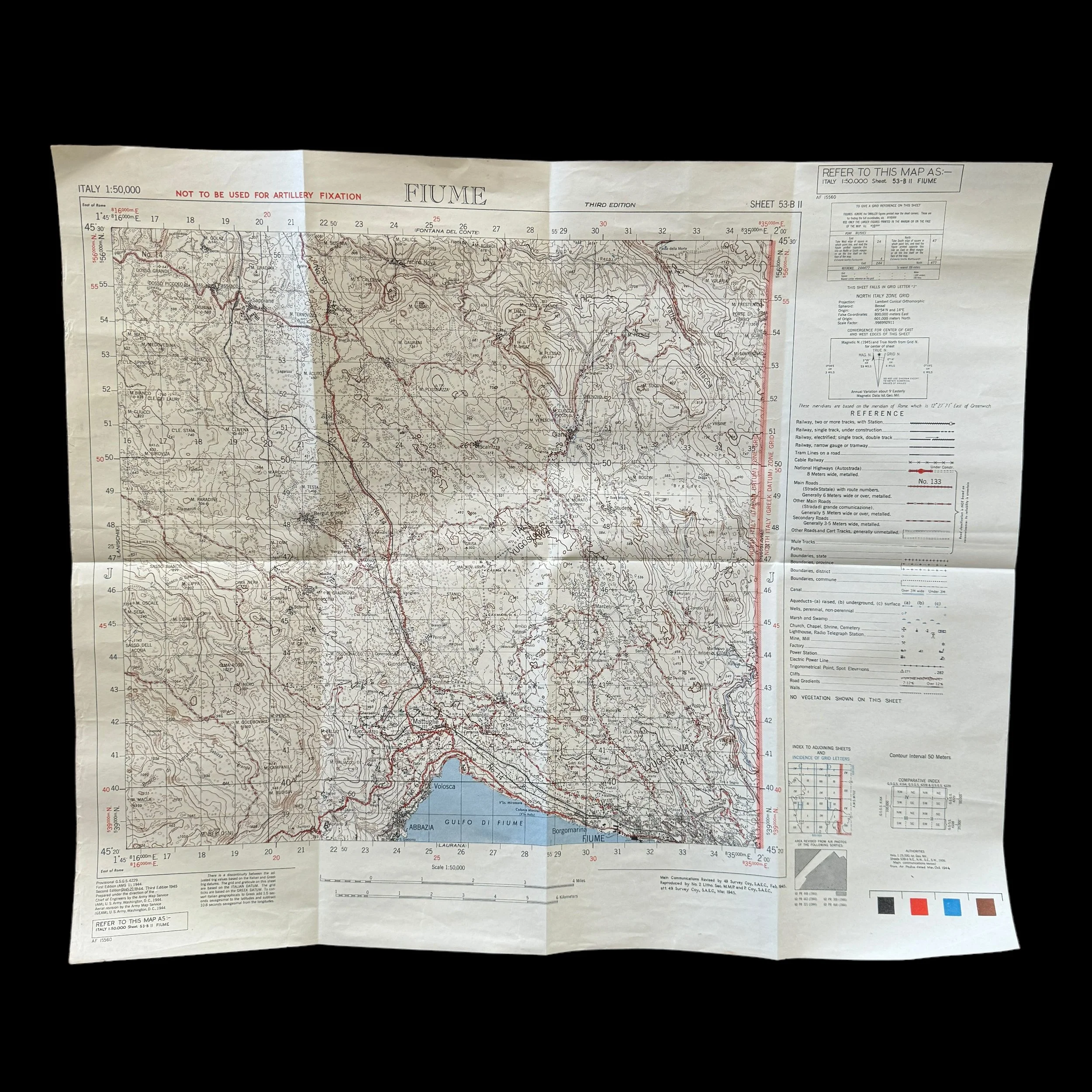

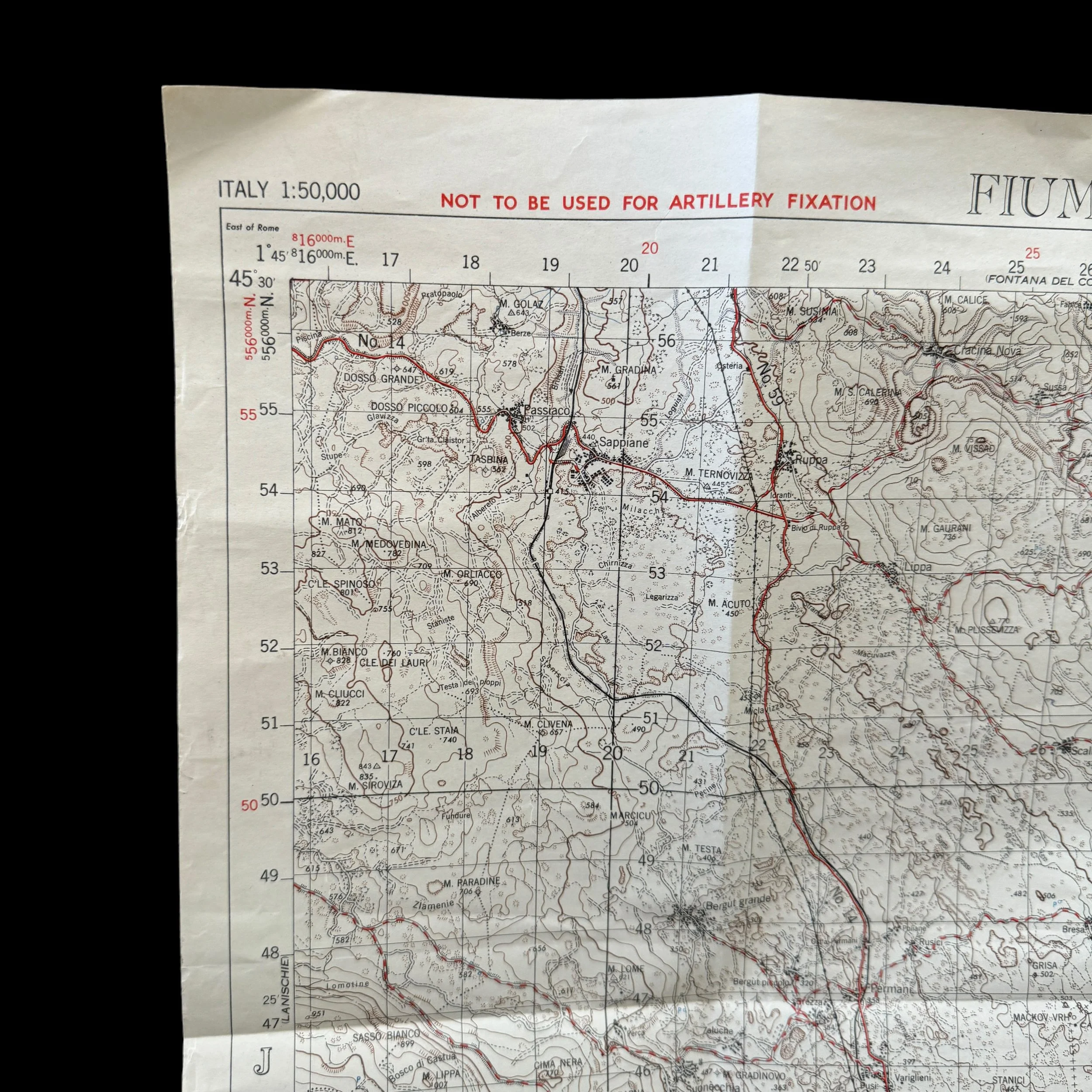

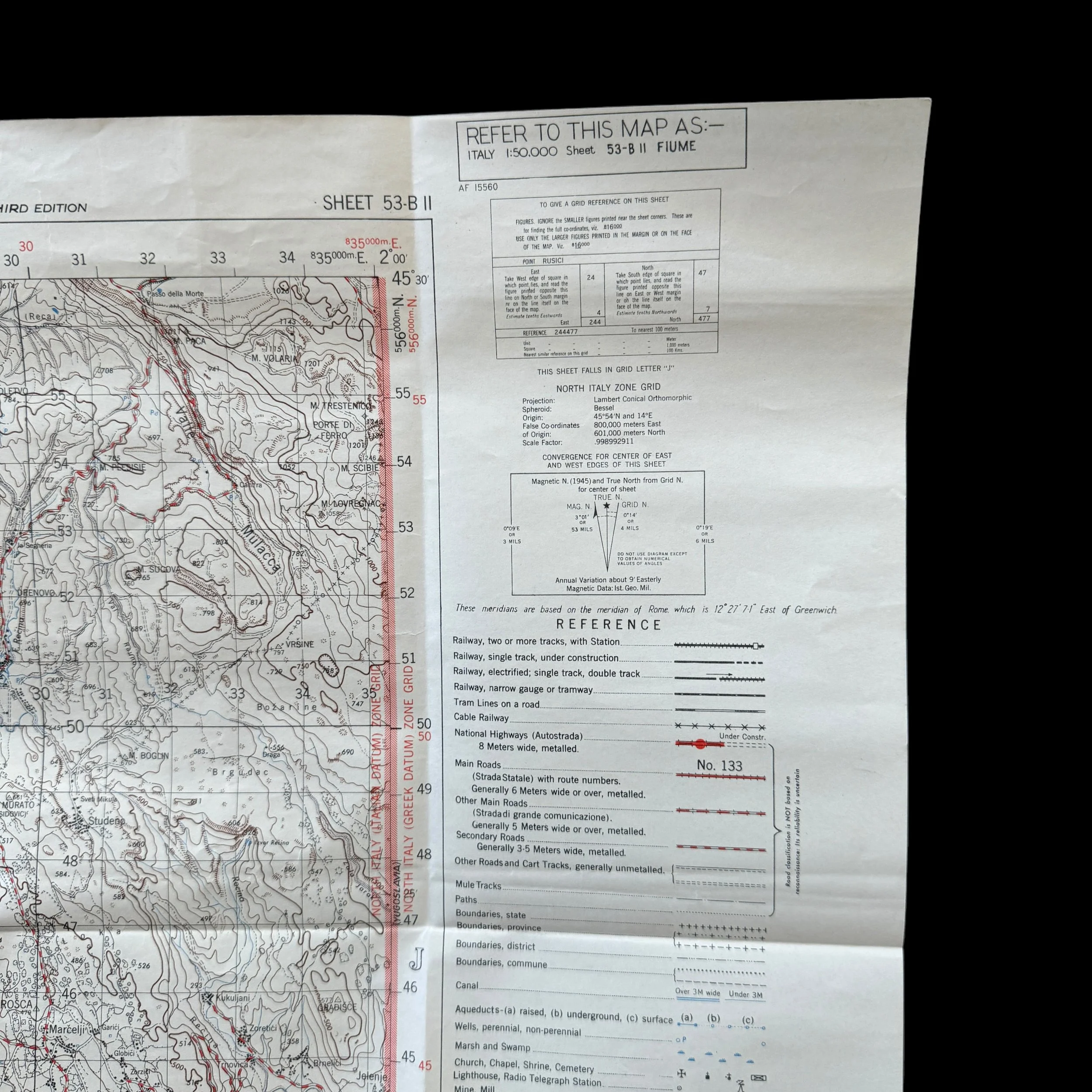
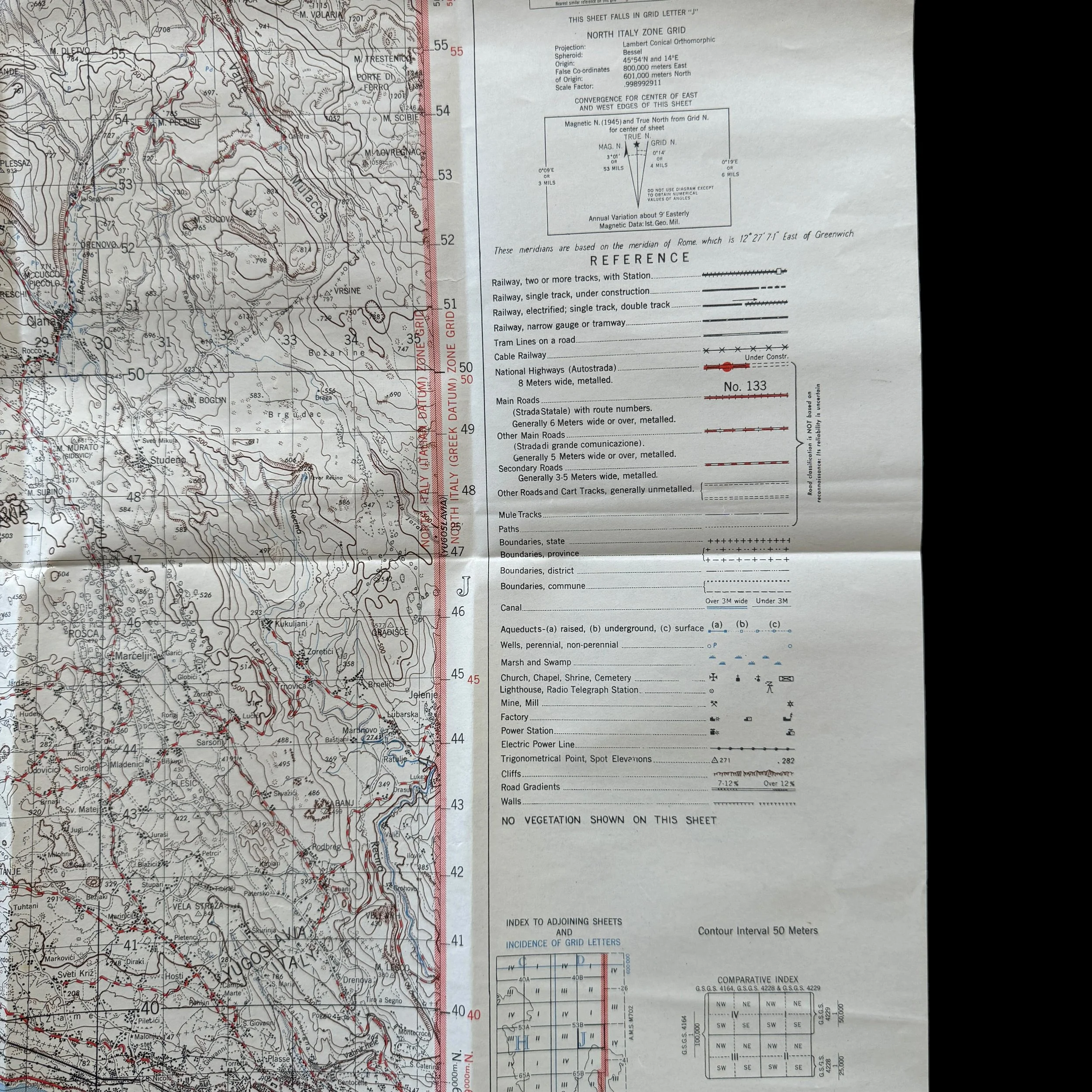

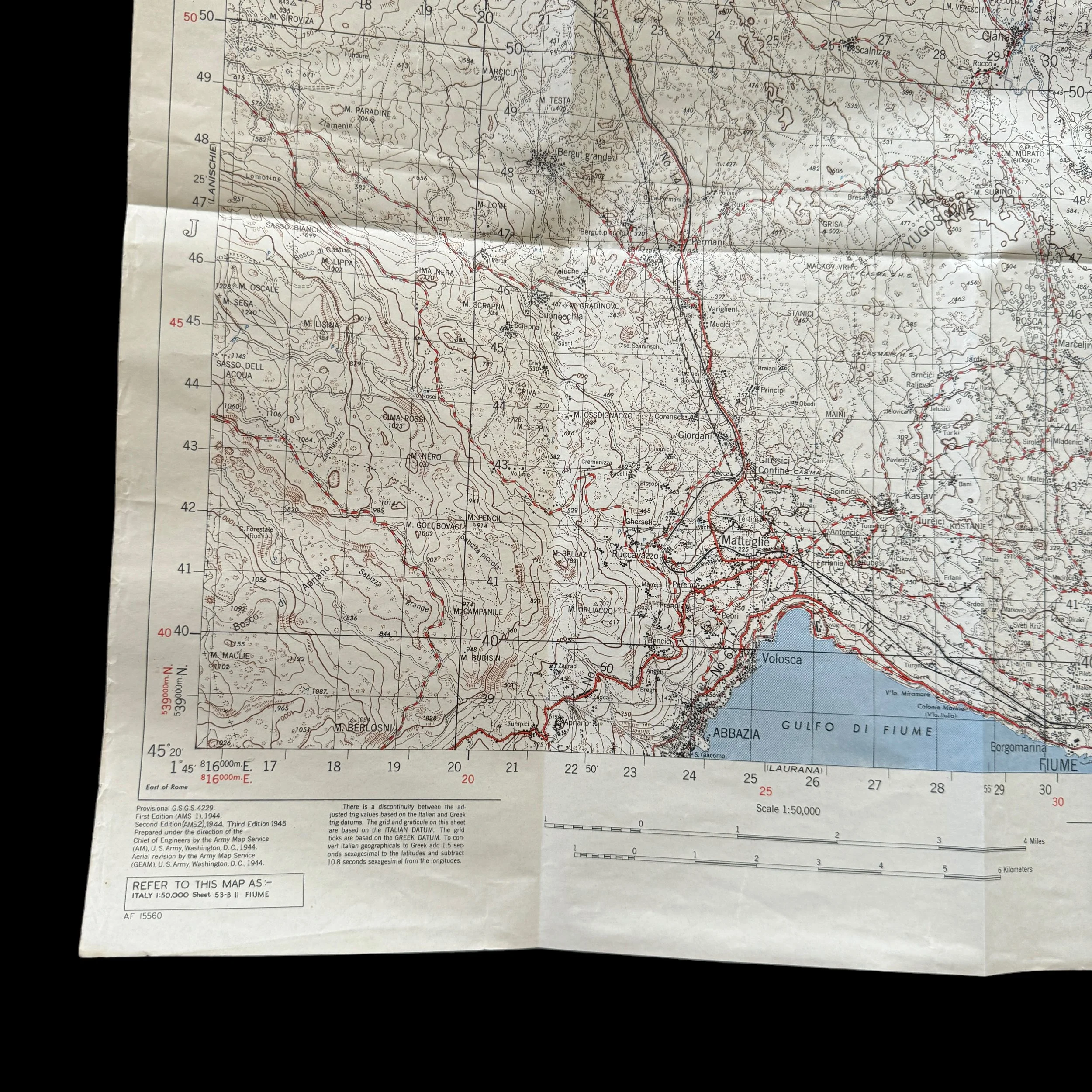
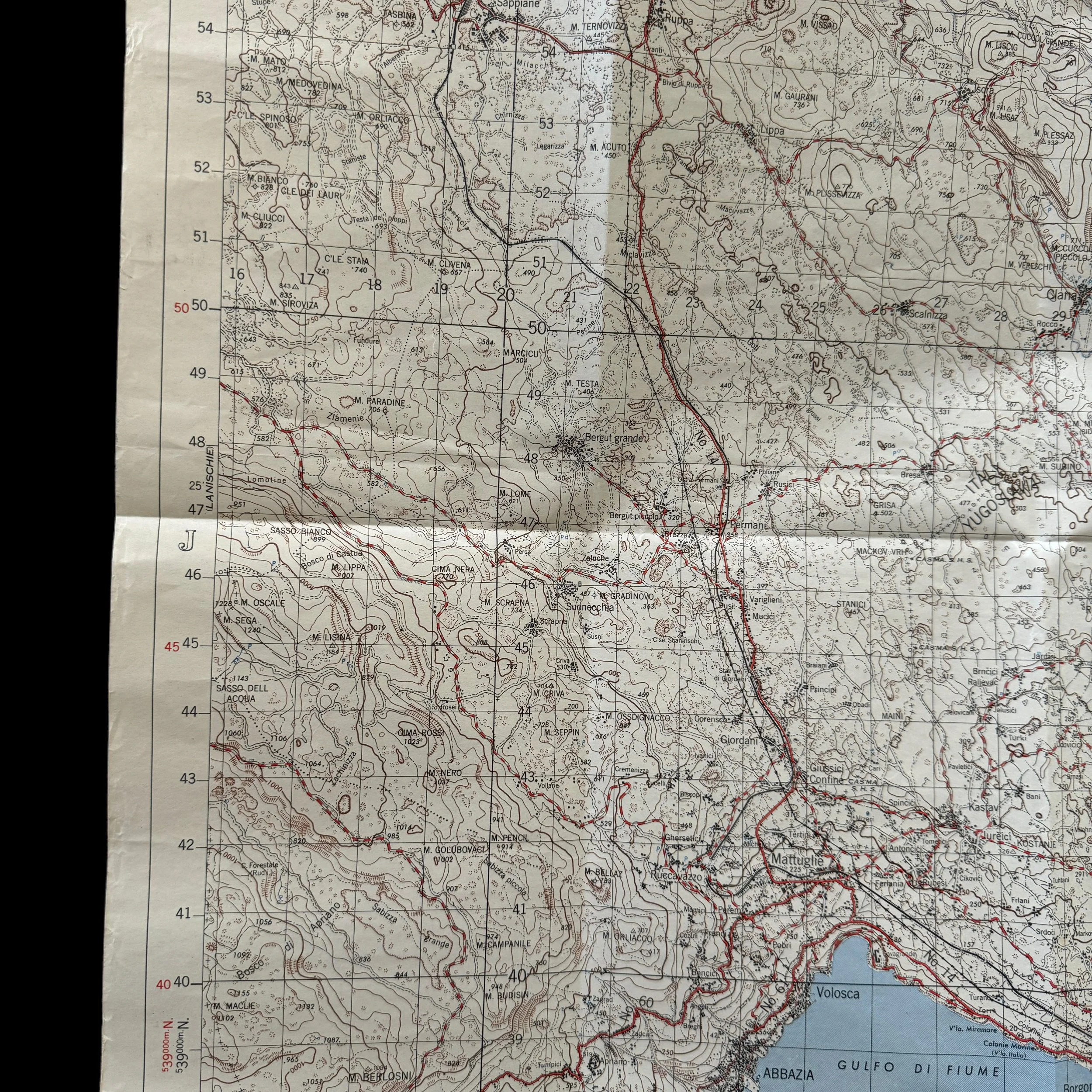

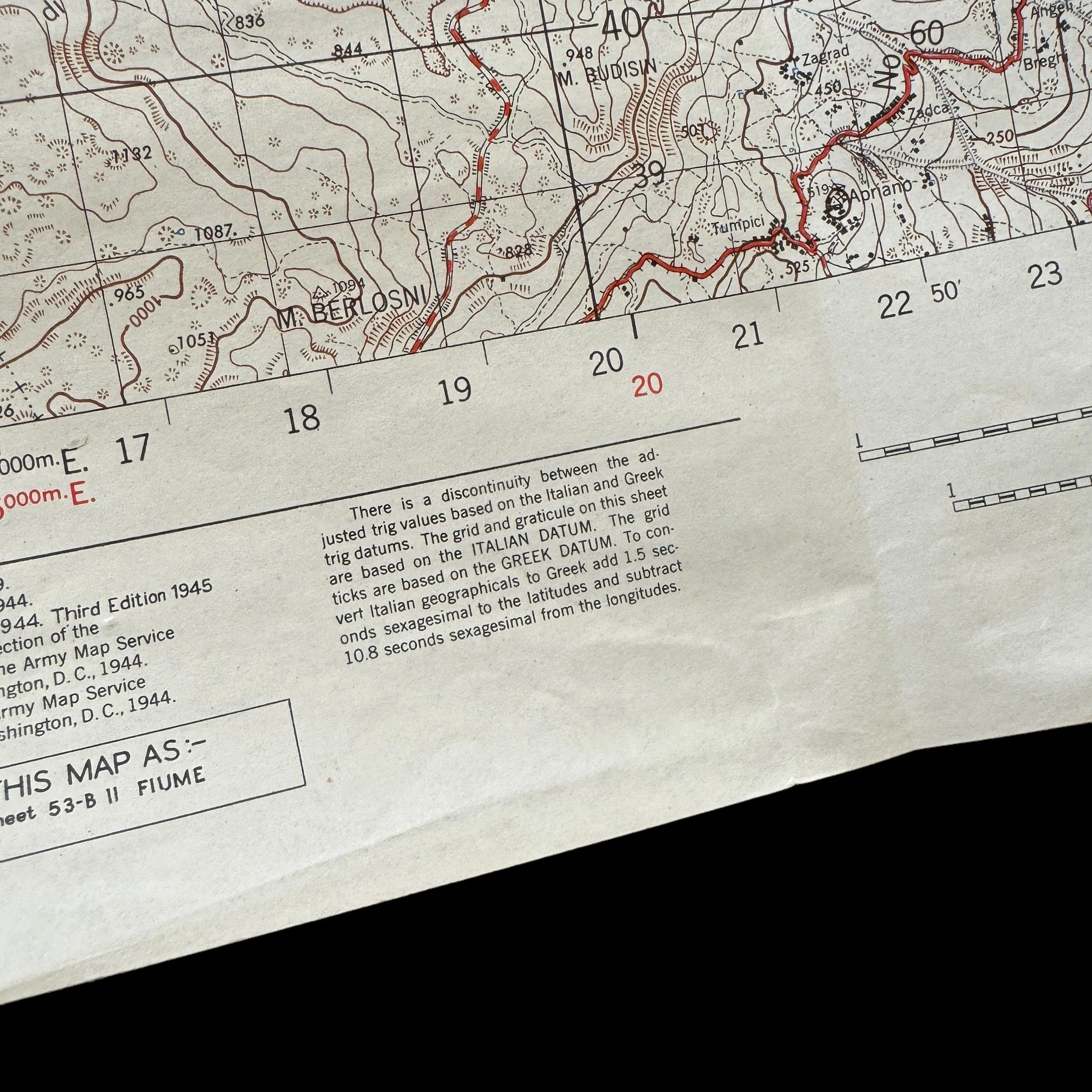
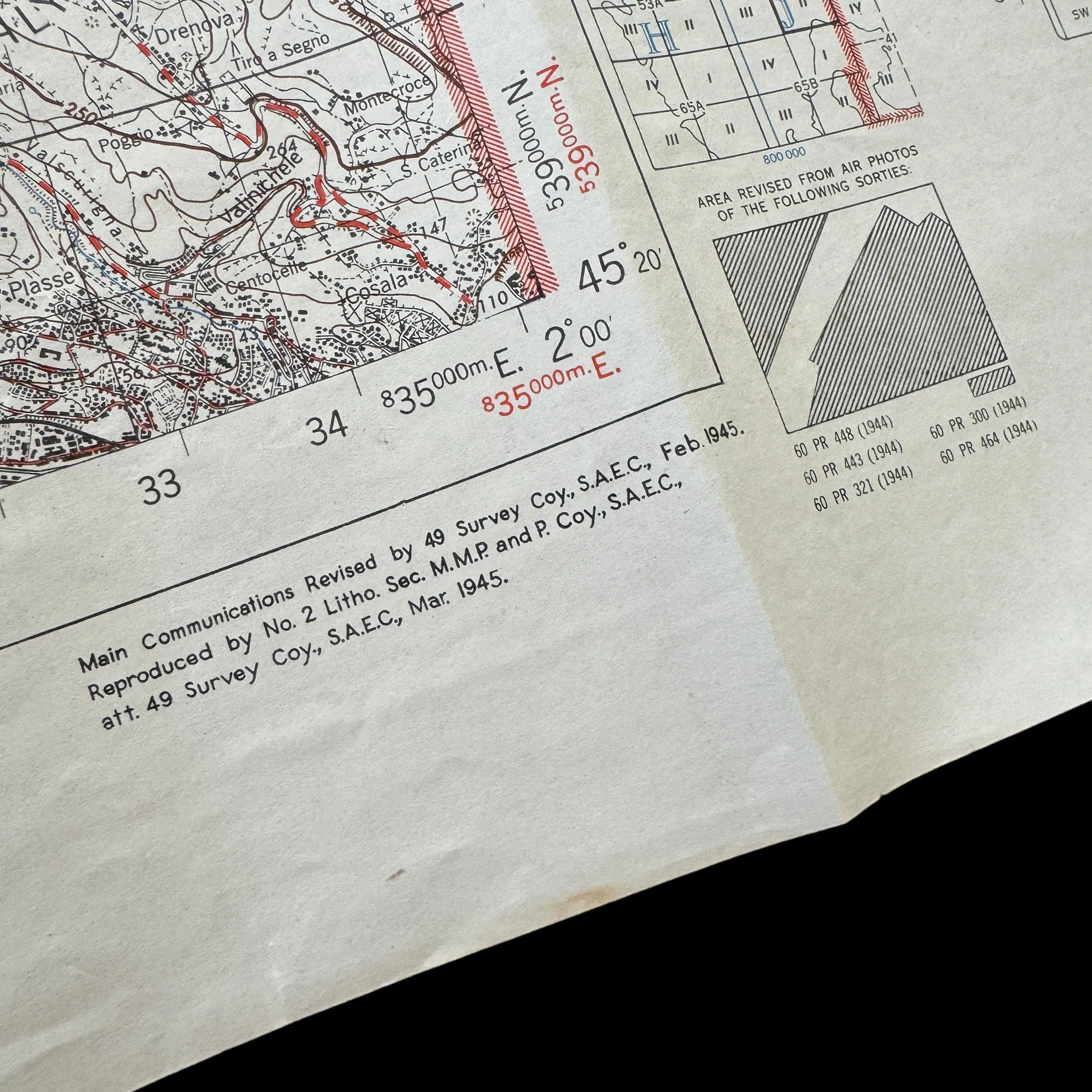

WWII Fiume Italy U.S. Infantry & Armored Division Allied Italian Campaign Italy Combat Map
Comes with a hand-signed C.O.A.
This rare and museum-grade original WWII U.S. combat map was used by U.S. Infantry and Armored Division's during the Allied Italian Campaign. The Italian Campaign began in 1943 with the Allied invasion of Sicily, which saw a series of brutal and hard-fought battles as Allied forces pushed northward through Italy. The campaign aimed to liberate Italy from Axis control and open a new front in Europe, drawing German forces away from the Eastern Front and relieving pressure on Soviet forces.
Fiume, known today as Rijeka, is a city on the Adriatic coast in present-day Croatia. However, during World War II, it was part of Italy and played a significant role in the broader strategic operations of the Allies and Axis forces in the region. Fiume’s importance derived from its strategic location as a port city, its industrial capabilities, and its role as a transport hub connecting the Adriatic to Central Europe. The city's fate during the war reflected the broader struggles between the Axis powers and the Allies as they sought to control the crucial regions of Southern Europe.
Fiume before the War
Before World War II, Fiume had a tumultuous history. The city changed hands several times, with various powers vying for control due to its strategic importance. After World War I, Fiume was the subject of intense diplomatic negotiations between Italy and the newly formed Kingdom of Serbs, Croats, and Slovenes (later Yugoslavia). In 1920, the Treaty of Rapallo established Fiume as an independent Free State, but in 1924, it was annexed by Italy. Under Italian rule, Fiume became an important industrial and naval center, with its shipyards and factories playing a crucial role in the Italian war effort.
The Importance of Fiume during World War II
During World War II, Fiume’s significance grew as the city’s port and industrial capabilities were vital to the Axis powers, particularly Italy and Germany. The port of Fiume was a critical point for naval operations in the Adriatic Sea, and the city’s industries provided essential materials and manufactured goods for the Axis war machine. Moreover, Fiume’s location made it a key transport hub, linking the Adriatic with the interior regions of Central Europe, including Germany, Austria, and Hungary.
For the Allies, controlling Fiume was crucial to disrupting Axis supply lines, cutting off the Axis forces in the Balkans from their resources, and securing the Adriatic coast to prevent any German counteroffensive from the sea. Fiume also had symbolic importance, as its capture would demonstrate the Allies’ dominance in the region and their ability to strike deep into Axis-held territory.
Allied Campaigns and Operations in Fiume
The Allied campaign in Fiume was part of a broader effort to secure the Adriatic coast and liberate the Balkan Peninsula from Axis control. This campaign involved a combination of naval operations, air strikes, and ground assaults, with the ultimate goal of capturing Fiume and the surrounding regions.
1. Naval Operations:
The Allied naval operations in the Adriatic were crucial in isolating Fiume from the rest of Italy and the Axis-controlled Balkans. The Royal Navy, along with the U.S. Navy, launched several operations to blockade the port of Fiume and disrupt Axis supply lines. These operations involved the use of submarines, surface ships, and aircraft to attack Axis shipping in the Adriatic. The Allies also laid extensive minefields in the waters around Fiume to prevent the movement of Axis ships.
The naval blockade of Fiume was highly effective in cutting off the city from reinforcements and supplies. The Axis forces in Fiume, particularly the German garrison, became increasingly isolated as the blockade took its toll. The port’s infrastructure was heavily damaged by repeated Allied air strikes, further crippling the Axis war effort in the region.
2. Air Campaign:
The air campaign against Fiume was a critical component of the Allied strategy. The U.S. Army Air Forces (USAAF), along with the Royal Air Force (RAF), conducted extensive bombing raids on Fiume and its surrounding areas. These raids targeted the city’s industrial facilities, including shipyards, factories, and rail yards, as well as military installations and supply depots.
The bombing of Fiume was part of a broader Allied air campaign against Axis-controlled industrial centers in Italy and the Balkans. The goal was to disrupt the Axis war effort by destroying their production capabilities and crippling their transportation networks. The raids on Fiume were particularly devastating, as the city’s industrial infrastructure was heavily concentrated in a small area, making it vulnerable to concentrated bombing.
The air campaign also had a psychological impact on the Axis forces in Fiume. The repeated bombing raids, combined with the naval blockade, created a sense of isolation and inevitability among the German and Italian defenders. Morale among the Axis troops in Fiume began to deteriorate as they faced the prospect of being cut off and overwhelmed by the advancing Allied forces.
3. Ground Assault:
The ground assault on Fiume was part of the broader Allied offensive in Italy and the Balkans. By the spring of 1945, the Allies had made significant gains in Italy, pushing the German forces back and liberating much of the country. The capture of Fiume was a key objective in this final phase of the Italian campaign.
The ground assault on Fiume was led by the Yugoslav Partisans, supported by elements of the British Eighth Army and the U.S. Fifth Army. The Partisans, under the command of Josip Broz Tito, had been conducting a guerrilla war against the Axis forces in Yugoslavia for several years. By 1945, they had grown into a formidable force, capable of taking on the German and Italian troops in conventional battles.
The assault on Fiume began in late April 1945. The Partisans launched a series of coordinated attacks on the German positions in and around the city. The fighting was intense, as the Germans had fortified Fiume in anticipation of an Allied assault. However, the Partisans were able to outflank the German defenses and cut off their escape routes.
The final battle for Fiume took place on May 3, 1945, when the Partisans launched a full-scale assault on the city. After several days of heavy fighting, the German garrison surrendered on May 5, 1945. The capture of Fiume marked the end of major military operations in the Adriatic region and paved the way for the liberation of the rest of Yugoslavia.
Aftermath and Significance
The capture of Fiume had significant implications for the final stages of World War II in Europe. The fall of the city marked the collapse of German resistance in the Adriatic and the Balkans. It also allowed the Allies to secure the entire Adriatic coast, preventing any possibility of a German counteroffensive from the sea.
The liberation of Fiume also had political implications for the post-war settlement in the region. The city became part of Yugoslavia after the war, as part of the broader territorial adjustments that followed the defeat of the Axis powers. Fiume’s incorporation into Yugoslavia was a significant moment in the reorganization of the Balkans, as the city had been a symbol of Italian territorial ambitions in the region.
Fiume’s role in World War II was shaped by its strategic importance as a port city and industrial center on the Adriatic coast. The Allied campaign to capture Fiume was a key part of the broader effort to liberate Italy and the Balkans from Axis control. The successful naval blockade, air campaign, and ground assault on Fiume demonstrated the effectiveness of Allied combined arms operations and marked the beginning of the end for Axis forces in the region. The fall of Fiume not only had military significance but also paved the way for the post-war reorganization of the Balkans, highlighting the city’s enduring importance in European history.
4o